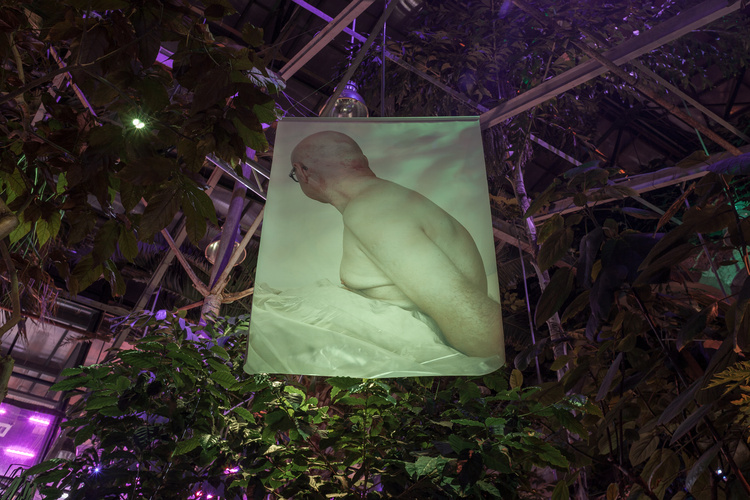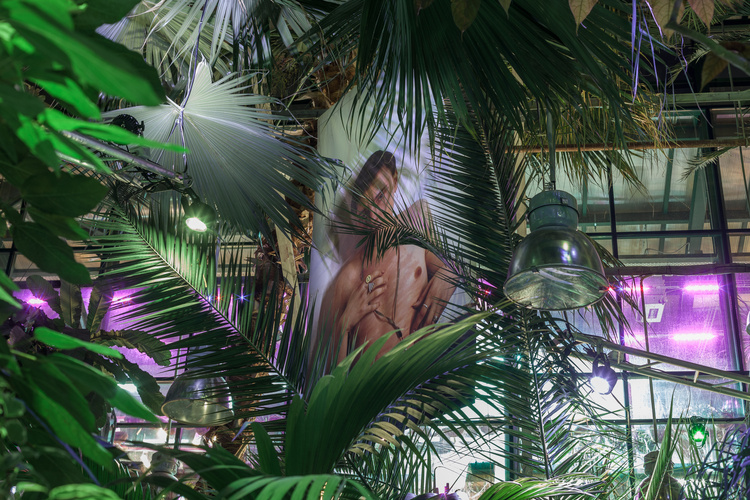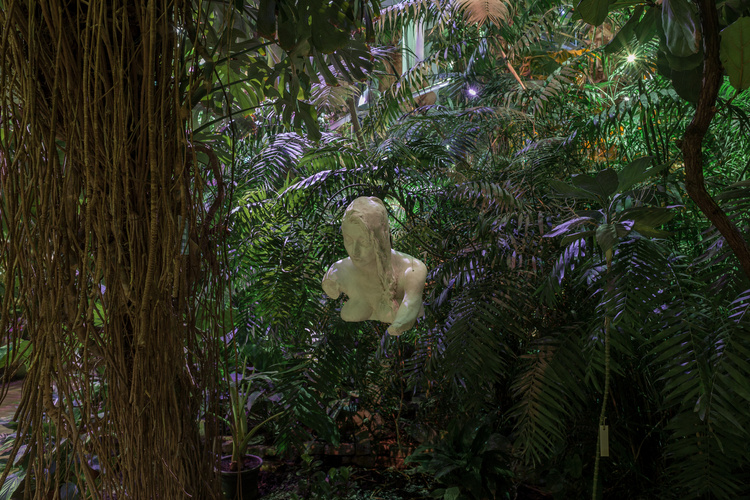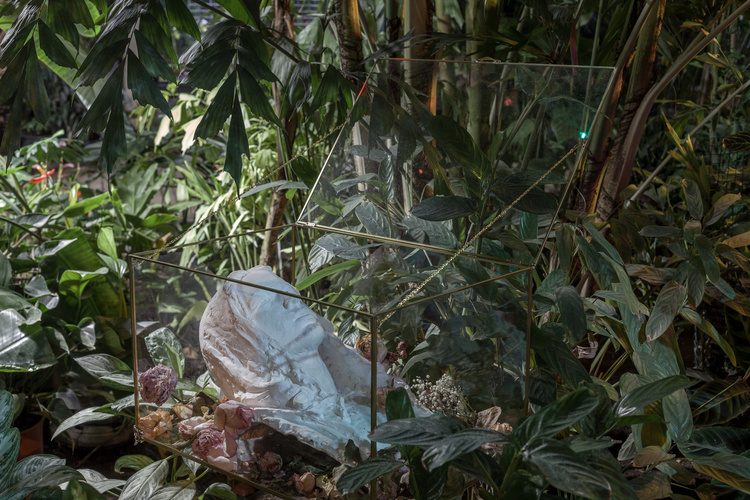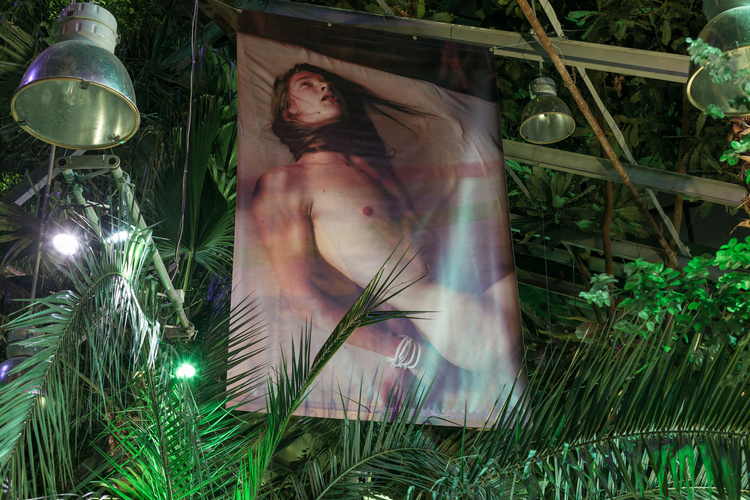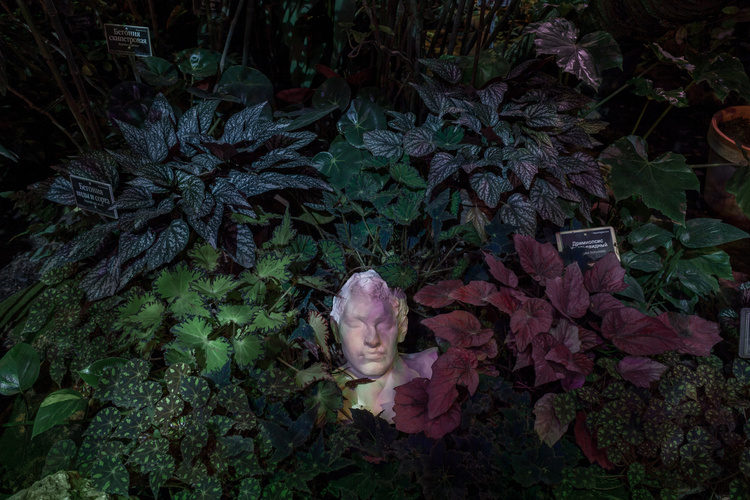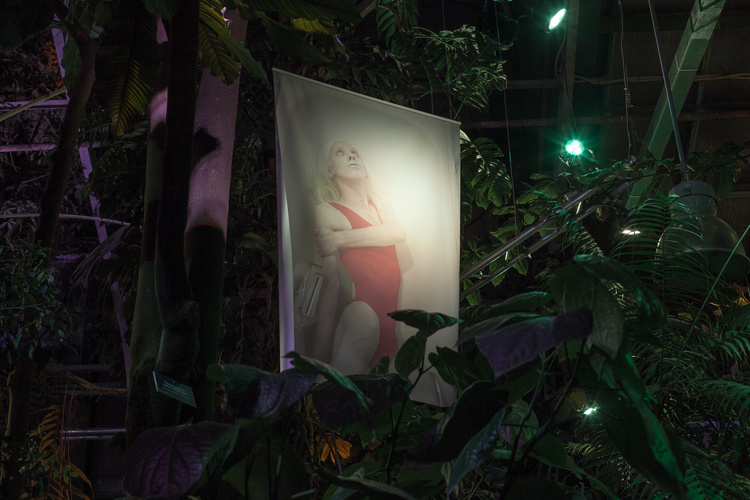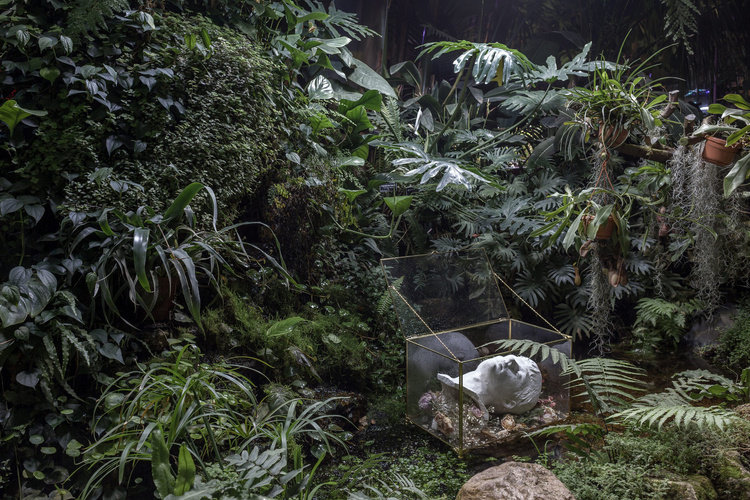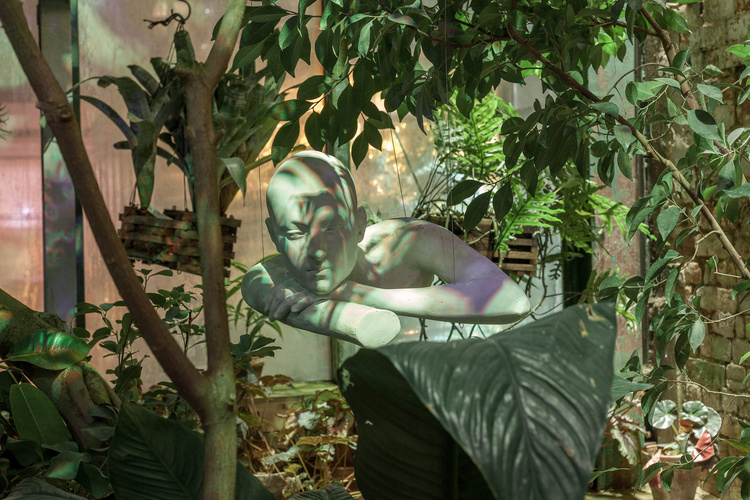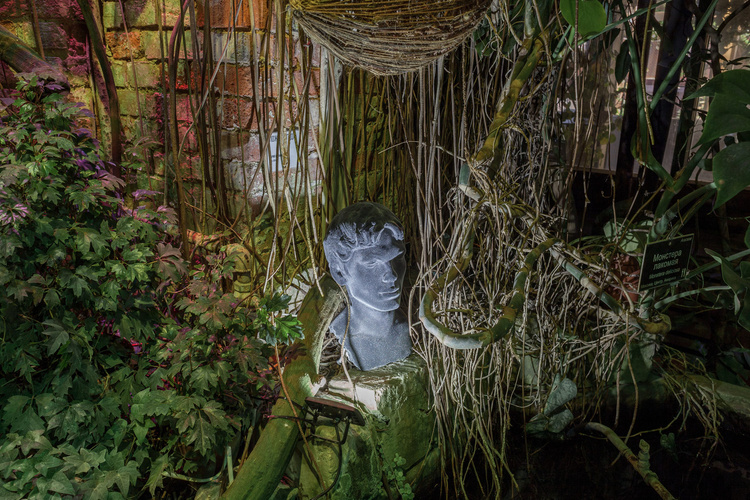(with Ekaterina Kovalenko )
This project is dedicated to aspects of beautiful in depicting people through the centuries and until nowadays. The aim of the artists is to embody the fading beauty, extinction of life and to fix an aesthetical reflex of the spectator.
Discovering human corporality and sensuality as well as ways to embody them in photographs and sculptures, artists use different means of rituality to hold up the transition from one stage to the other, they make the viewer to carefully look into the changes of those aesthetically measured images, being destroyed by death.
The project was censored after 2 days of the exhibition.
With the support of “Young lions” grant program by Triumph gallery, Moscow
Aptekarsky Ogorod Botanical Garden, Tropical greenhouse, Moscow, Russia, 2018
Text by Inna Ekhos
Vera Barkalova’s and Ekaterina Kovalenko’s exhibition FADING BEAUTY is dedicated to aspects of beautiful in depicting people through the centuries and until nowadays. The aim of the artists is to embody the fading beauty, extinction of life and to fix an aesthetical reflex of the spectator.
Discovering human corporality and sensuality as well as ways to embody them in photographs and sculptures, artists use different means of rituality to hold up the transition from one stage to the other, they make the viewer to carefully look into the changes of those aesthetically measured images, being destroyed by death.
Travelling around Europe the artists had a chance to see the masterpieces of Italian painting, photography and sculpture and to find that feeling, which is through centuries an author delivers to viewers. According to Ekaterina and Vera that effect brings them back to the state of artist and gives a chance to look at the theme of death from a different perspective, using the gained knowledge:
«In the last century the European perception of death has changed—it became more stigmatized and prohibited as if it did not exist at all. There is no sadness and romance in culture and art, no beauty, mass media only speaks about death in the aspect of breaking news or horrible catastrophe»
During a long time in a Western concept of world order death was defined as an absence of presence; depicting the process of dying artists concentrated on everything else that was happening apart from death: on the tragic circumstances, on the emotions of other characters, on the story behind and the context.
Only by the end of 18th century and the beginning of 19th century death started to be seen in the European mind not as an absence of life, but as an independent event, started to gain its own nature, substance. Practically it happened because of the scientific and technological progress. Vivisection and anatomic theatre stopped scaring laymen, they became a part of new culture.
Urbanization and progress have influenced aesthetic of funeral. As the territories of the cemeteries based around the churches were getting full, the new way of arranging them was developed: away from the tight city those country side cemeteries looked like gardens and park ensembles full of majestic atmosphere of dark romanticism.
New bourgeois society in its tendency to make the longest mark in time and space started to evoke the traditions of burial sculptures (this is how the largest monumental cemeteries have appeared: Cimitero monumentale di Staglieno, Cimitero Monumentale di Milano and Certosa di Bologna).
Combining in themselves elements of classicism, neo-gothic and realism burial monuments often looked just like the person, who was buried—that replication of reality in the process of transformation from the alive object to its own index translates a plastical feeling of variety of quantization of reality. In his treatise Symbolic Exchange and Death Jean Baudrillard wrote:
“Stucco is the triumphant democracy of all artificial signs, the apotheosis of the theatre and fashion, revealing the unlimited potential of the new class, as soon as it was able to end the sign’s exclusivity. The way is clear for unheard of combinations, for every game, every counterfeit…”
But it’s not only the monumental art of new graves allows the spectator to catch (or extend) the moment when the object loses the properties of vital attractiveness.
The technology of obtaining daguerreotype images that spread in the Victorian era gave birth to a practice of photographing dead people—a genre known as “posthumous photography”. Affordable to the poor population, this technology of post-mortem portraits helped to sentimentally capture an interpreted sign, a mark that fading beauty leaves behind with the help of light—through that the photo pushes the boundaries of the possible and denotes the problem of designation of living and non-living. The technology of photography then discovered the difficulty of finding that boundary, as shooting with a long exposure required immobility for a considerable period of time, which was possible in photographing inanimate objects and completely unnatural when a living object came into the lens. The necessity to maintain a static position in space internally dictated the depicted person a pose, which was similar to the dead body.
In her work artist Vera Barkalova fixes that feeling, catches the elusive moment of the dispersion of the image, the transformation of the beautiful into something else, this complex feeling can be compared with what Roland Barthes wrote in his essay Camera Lucida:
“In terms of image-repertoire, the Photograph (the one I intend) represents that very subtle moment when, to tell the truth, I am neither subject nor object but a subject who feels he is becoming an object: I then experience a micro-version of death”
Ekaterina Kovalenko works with sculpture. A full-scale volume, the opportunity to look at the sculpture from different angles causes a sense of length in space as well as in time. This length allows you to represent an object in the spectrum of its metamorphosis, allowing you to feel the moment in which the transformation occurs. The artist creates objects liberated from the terrible fate of decay. Placed in transparent glass boxes and decorated with flowers, these sculptures resemble at the same time a fabulous Sleeping Beauty in a crystal coffin and frightening exhibits of Kunstkamera, serenely drifting in cramped transparent flasks.
The translucent veil of the past, the descending and draping works presented at the exhibition, evoke a feeling of a fuzzy sign of time with which they could be correlated. The artists create a space of special mood—the Garden of Eden, a place for mortal beauty, whose emotional tone rhymes with the fading and ethereal beauty of the decay of the Victorian era.
FADING BEAUTY/
Intervention
(With Ekaterina Kovalenko ) )
After the Installation in Aptekarsky Ogorod was censored, we decided to place it in a public space because it was essential for us to showcase it and give the viewer the chance to decide for themselves whether they wanted to see it or not. Since we couldn’t exhibit it in the original space, we chose a location for our art on the outskirts of the big city, along the railway. This way, we introduce the image into the urban environment, create an intervention, and complete the artwork. Physically, it begins to dissolve outside the train window, escaping the gaze of a person immersed in their own world and only allowing them a fleeting glimpse of the image.
Most of the work was removed immediately by railway workers, and some work hung a week.
Ryazanskaya Railroad, Moscow, Russia, 2019
